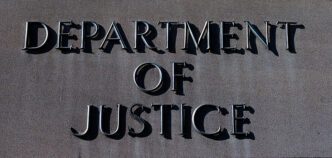Efforts to provide property tax relief in Texas are proving costly, with the state considering a significant financial commitment to sustain and introduce new reductions. The Texas House is evaluating a budget proposal to allocate $51 billion, representing 15% of the biennial state budget, towards maintaining and expanding property tax cuts. This expenditure surpasses allocations for transportation and higher education, causing concern among some legislators about the state’s fiscal capacity in the event of an economic downturn.
If viewed as a standalone agency, the budget for property tax reduction would be the third most expensive in Texas, exceeding expenditures on public safety and criminal justice by more than double. The allocation is greater than the operating budget for the Texas A&M System’s eleven campuses over two years, and could fund a high-speed rail line from Dallas to Houston.
Texans face some of the highest property taxes nationally, as the state has no income tax and relies heavily on property taxes to finance public services, notably schools. Lawmakers have been channeling significant funds to school districts to mitigate property tax collections from homeowners and businesses, a strategy they plan to replicate this year.
Recent years have seen lawmakers utilize large state budget surpluses to finance property tax reductions. A $33 billion surplus previously supported an $18 billion tax-cut package, and a $24 billion surplus is earmarked to assist new cuts and maintain existing ones. These surpluses stemmed from extraordinary conditions such as federal pandemic relief funds and heightened sales tax revenue due to inflation. However, these funds are dwindling, and sales tax collections have slowed due to increasing living costs.
With the economy projected to slow this year, compounded by economic uncertainties introduced by President Donald Trump’s tariffs, there is growing concern over the sustainability of ongoing property tax relief. Additionally, reduced demand for oil and falling gasoline prices, as predicted by the U.S. Energy Information Administration, could further impact state tax revenue from oil and gas production.
The property tax plan includes $44.5 billion to uphold cuts established since 2019. This involves funding to school districts to counterbalance reduced property tax collections, thus lowering tax rates, and raising the homestead exemption for public schools. The exemption was increased to $100,000 in 2023, with plans to allocate an additional $3 billion for further reductions.
Lt. Gov. Dan Patrick advocates increasing the homestead exemption due to its constitutional protection, making it difficult for future legislators to reverse. Currently, a proposal is in place to raise the exemption to $140,000, with further increases considered for older Texans.
Despite unanimous legislative support for raising the homestead exemption, concerns persist about the long-term fiscal implications. The tax cuts have provided homeowners substantial relief, but rising property values in 2024 have begun to erode these gains. Lawmakers face a challenge as local tax hikes and increasing insurance costs diminish perceived benefits.
Politically, reducing the homestead exemption requires voter approval via a constitutional amendment, and cutting spending on tax rate compression is challenging due to its political unpopularity. This fiscal tightrope walk means that budget cuts might eventually affect programs aiding low-income families.
Community Impact
The ongoing debate over property tax cuts in Texas highlights the delicate balance between fiscal responsibility and immediate relief for taxpayers. While the reductions offer significant short-term benefits, especially for homeowners, the long-term sustainability of such measures is uncertain. As state revenues face potential declines, the capacity to maintain these cuts without impacting essential services is a growing concern.
For ordinary Texans, particularly those in middle and lower-income brackets, the implications could be profound. Sustained tax cuts, if not managed prudently, could necessitate budgetary reallocations that impact public services, including education, healthcare, and infrastructure maintenance. This fiscal scenario underscores the importance of vigilant economic planning and community engagement to ensure equitable tax policies that do not compromise vital services.






